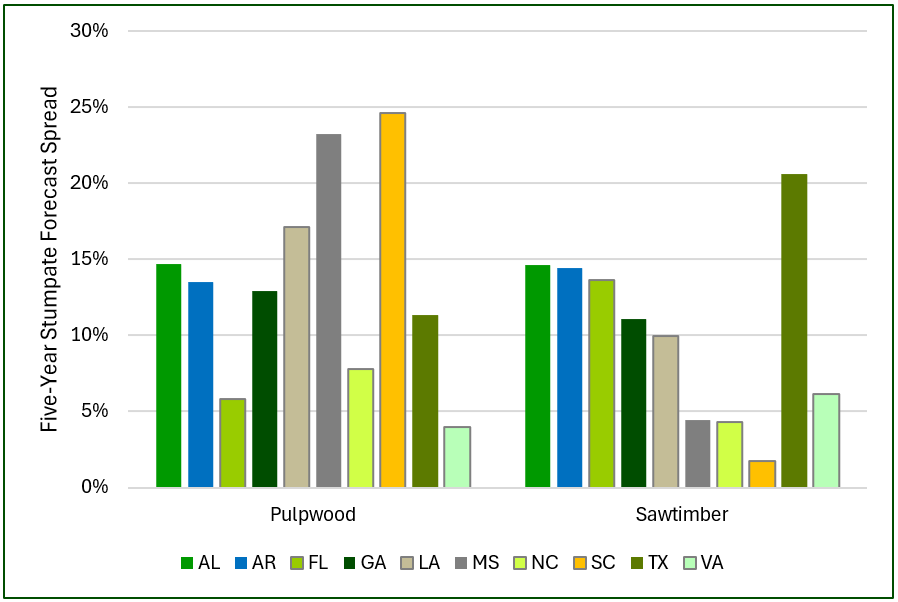At Forisk, we believe markets are uniquely local. We work hard to track mill capital investments because of their impact on local wood baskets. Similarly, we forecast timber supply at local levels to understand the supply and demand balance (or imbalance) across markets. Neither mills nor trees move (unless they are Ents), and clients need to understand markets surrounding their individual mills or forestland ownerships.
Last year, we launched our newest offering, the Forisk Custom Market Forecast (CMF) to highlight supply, demand, and price dynamics in local markets. Our standard state and regional forecasts provide relative directional outlooks across the U.S., but for firms comparing market dynamics around existing mill or timberland footprints, a comparison of local basins provides far greater clarity. To illustrate, the U.S. Forest Service Forest Inventory and Analysis (FIA) program subdivides states into multiple measurement units. Across ten southern states (excluding Tennessee in this example), there are 42 FIA units with meaningful softwood inventory and markets. If we use the CMF to forecast pine pulpwood and sawtimber prices in each of these FIA units, we can examine the variation in forecasts across multiple local markets in each state. For example, if prices increase 10% over five years in the “best” FIA unit and fall 2% in the “worst”, the difference or spread would be 12 percentage points across FIA units in the state.

The range of five-year price growth between the fastest and slowest growing markets in each state varies widely. Prices increase 14% more on average over the next five years in the fastest growing pine pulpwood markets than in the slowest. The spread between the best and worst markets averages 10% for pine sawtimber. South Carolina has both the highest spread between markets for pine pulpwood (nearly 25%) and the lowest spread for pine sawtimber (2%). While tracking state-level trends informs relative performance across a region, the CMF enables a focused comparison of local trends and drivers.
To learn more about the Custom Market Forecast, please contact Nick DiLuzio at ndiluzio@forisk.com.

Leave a Reply